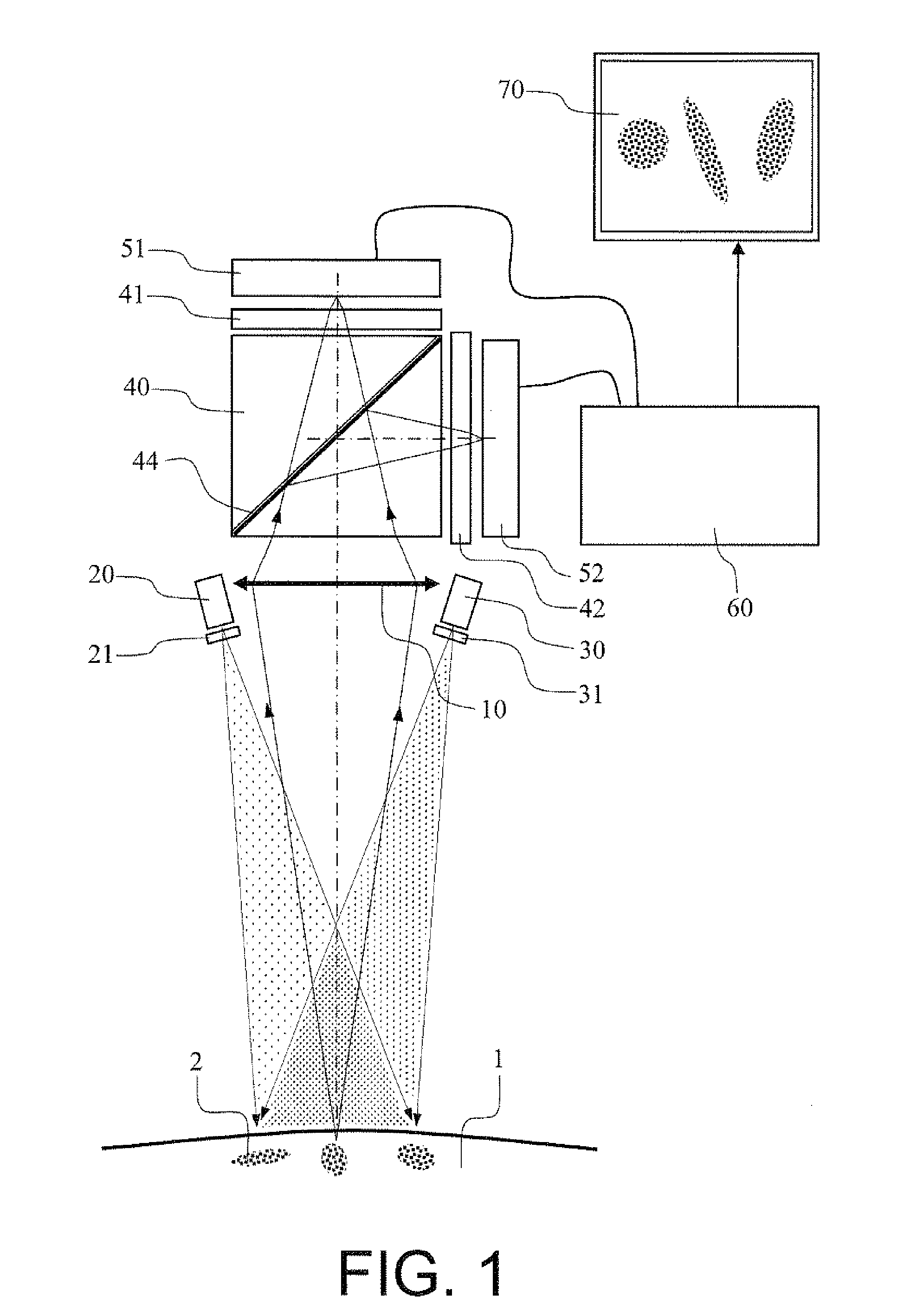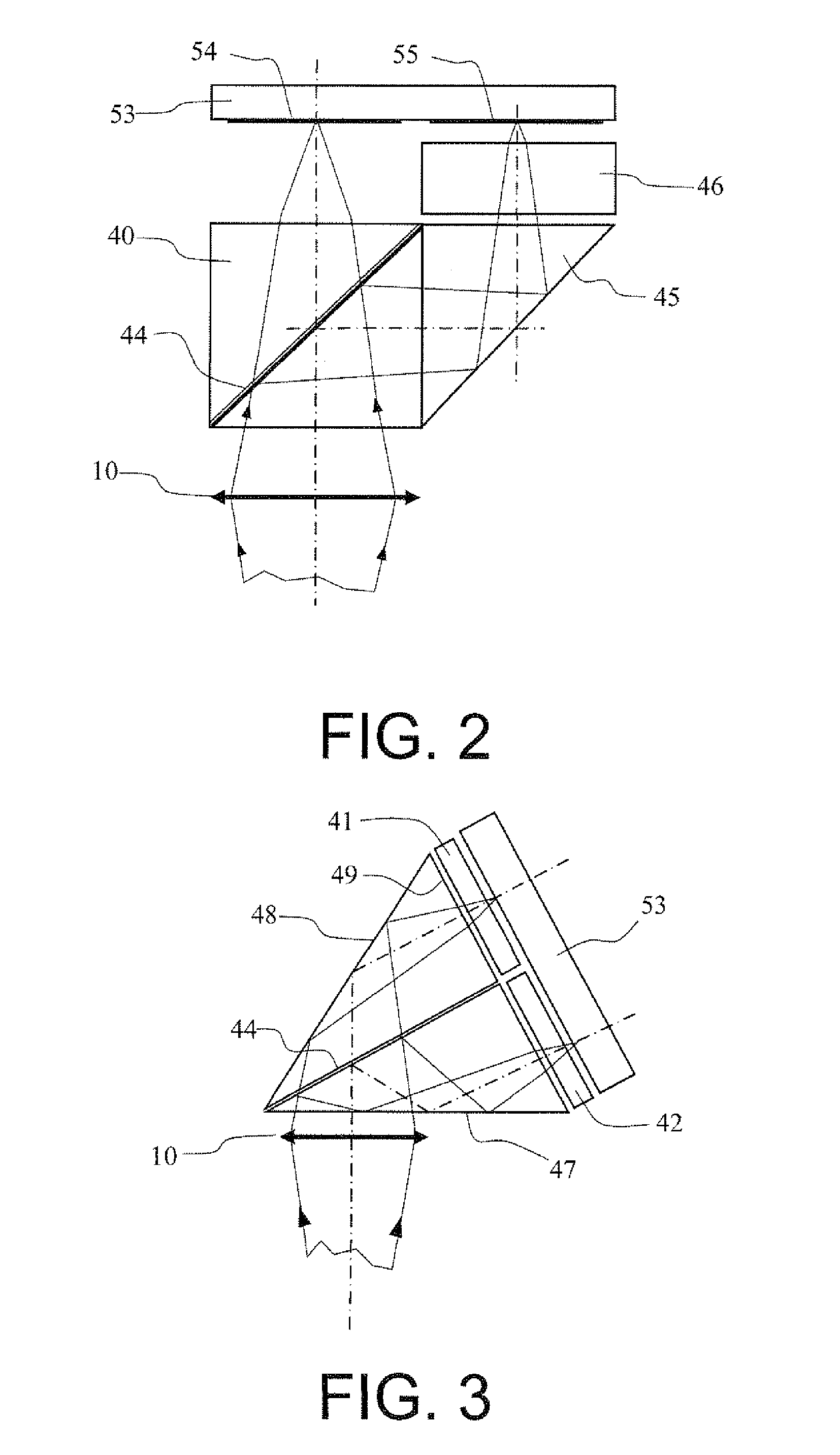Bi-Spectral Peroperative Optical Probe
- Summary
- Abstract
- Description
- Claims
- Application Information
AI Technical Summary
Benefits of technology
Problems solved by technology
Method used
Image
Examples
first embodiment
[0050]FIG. 1 represents the diagram of a peroperative optical probe according to this architecture. In this and in the following figures, the dimensions are not necessarily representative of those of a real probe, the objective being to show the general opto-mechanical principles of implantation of the various elements and the route of the light rays through the optical elements. In this and the following figures, neither the mechanical casing surrounding the probe and held by the user nor the various mechanical supports making it possible to maintain and to position the various optical components are represented. The placing of its various elements does not pose any particular difficulties for the person skilled in the art.
[0051]The probe is represented in operational use, that is to say held by an operator above an intervention zone.
[0052]The probe according to the invention essentially comprises:[0053]a first so-called excitation lighting source 20, the spectral radiation of this...
second embodiment
[0065]In a second embodiment represented in FIG. 3, the splitter prism is a “Koster” prism composed of two identical prisms, the face common to the two prisms 44 comprising a dichroic treatment reflecting the visible radiation and transmitting the radiation lying in the near infrared. Each prism has a cross-section of right-angled triangular shape. The propagation of the light rays is as follows: the light rays emanating from the objective 10 enter the “Koster” prism through the lower face 47, are split by the dichroic treatment 44, are reflected by total internal reflection on the faces 47 and 48 and exit at quasi-normal incidence through the face 49 where they may be filtered by the filters 41 and 42 before being focused on the single photosensitive sensor 53.
[0066]As was stated, the excitation sources are generally laser sources powerful enough to cause discernable fluorescence. Hence, it is important to ensure the ocular safety of the operator or of the personnel undertaking the...
PUM
 Login to View More
Login to View More Abstract
Description
Claims
Application Information
 Login to View More
Login to View More - R&D
- Intellectual Property
- Life Sciences
- Materials
- Tech Scout
- Unparalleled Data Quality
- Higher Quality Content
- 60% Fewer Hallucinations
Browse by: Latest US Patents, China's latest patents, Technical Efficacy Thesaurus, Application Domain, Technology Topic, Popular Technical Reports.
© 2025 PatSnap. All rights reserved.Legal|Privacy policy|Modern Slavery Act Transparency Statement|Sitemap|About US| Contact US: help@patsnap.com



